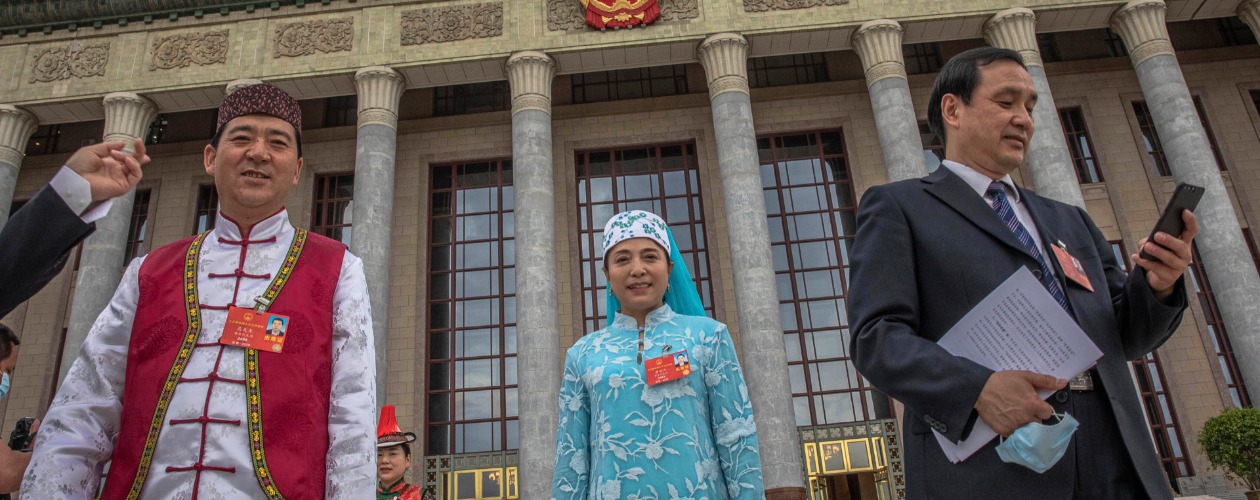
The end of the year is, frequently, a time for senseless clichés. I won’t bore you by repeating them.
What I will say, in lieu of Auld Lang Syne and so forth, is in 2021 China has managed to take stock of its achievements and begin looking confidently into the future.
This was exemplified by two documents released this year. In November, the sixth plenary session of the Communist Party of China’s 19th Central Committee published a resolution surveying the 100 years of the party’s history, comprehensively contextualizing the journey it has been on since its founding in 1921. But in the spring, another mammoth volume was published, one which set definitive, tangible goals for the years ahead.
I’m talking about the 14th Five-Year Plan for 2021-25, which was released along with long-range objectives through 2035. In it, China presents a set of targets in key economic, social, and developmental indicators for the coming half-decade, as well as more qualitative statements for the distant horizon. It’s highly detailed and worth a close look, if for nothing else than to disabuse oneself of the notion China’s ambitions are opaque.
One of the more striking conclusions that can be drawn from the new Five-Year Plan is that growth is no longer the sole metric by which the Chinese economy will be measured. As the country moves into a new stage of development, new sets of numbers take on greater significance: Employment, disposable income, labor productivity, environmental protection, years of education, doctors per 1,000 people, and several other figures are being used to track China’s progress in the 14th Five-Year Plan period. In many ways, these are even more important, as they directly reflect how conditions for people are improving and what areas still need attention. All the GDP growth in the world won’t matter, after all, if people aren’t living happier, healthier, longer, and more dignified lives.
“High-quality development,” “dual circulation,” “new development paradigm”—these phrases are often dismissed as empty rhetoric in the West, but they represent an outlook that is forward-thinking, adaptable, and, most critically, puts people first. A country that had no interest in its people would make GDP growth the perpetual, sole benchmark for economic health, with little attention paid to the quality of life for the average person.
We see the outcome of this philosophy every day in many countries—stagnant incomes, rising inequality, and an inability to deal with even small-scale financial emergencies without taking on new debt. These are places where wealth is growing, as reflected in GDP, but that growth is wildly disproportionate, enriching a tiny sliver of the population at the expense of everyone else. That’s not the future China wants, and a rational allocation of resources through planning is the only way to prevent it. Each year, China sets goals and meets them, proving to the world it is possible to enjoy a stable, sustainable development that benefits all.
In a country like the U.S., where major political decisions seem to happen on a whim, the very notion of a long-term plan can seem like a novelty. Saying China “thinks in decades” while other countries only think until the next election has become a well-worn chestnut among the Western commentariat; it has a measure of truth, but not because of some intractable cultural difference or the peccadilloes of parliamentary democracy. Rather, it comes from the orientation of communist parties in general and China’s in particular—its historic stance and organizing principles maintained over a century.
As the most advanced elements of the working class and the political organ which holds a decisive leadership role, a communist party must act in the interests of that class rather than that of the bourgeoisie. And since the working class represents the vast majority of people in any given country, with all the contradictions and complications that implies, seeing to their needs without a concrete plan in place would be an impossible task.
But what would happen without it? We don’t need to look far or work in hypotheticals. It is an indisputable fact that bourgeois “democracy,” with its partisan bickering and laser focus on the short-term, carries with it a degree of chaos, a seemingly detrimental level of uncertainty and tension. To many, this is its biggest shortcoming. But this is, at most, a symptom, and not necessarily a problem at all for those who stand to gain from government inaction.
Electoral chaos is one of many outward expressions of turmoil from a system where, broadly speaking, dysfunction serves a larger purpose. The ritualistic fracas of electoral politics reflects a deeper phenomenon, namely the anarchy of capitalist production—an environment where every economic actor is looking to maximize immediate gains without thought to the consequences. In that sense, a political system incapable of long-term planning or prioritizing social benefit works entirely to the advantage of the class that holds monopoly power. Keeping the working majority fighting itself through the theater of elections aligns perfectly with the interests of that class, which fears rational, equitable distribution of resources above all else. It is, as they say, a feature, not a bug.
But China presents an alternative to this sad state of affairs. With its latest Five-Year Plan, the country has laid out a road map for real action in a trying era. Attempts to contain and encircle China have intensified in recent years, and continuing on the path of progress has become a more demanding proposition. Armed with this document, released as it was in a year of great milestones as well as challenges, the Chinese government and people have a blueprint for the next five years, and indeed the next half-generation.
It’s something the rest of the world could learn from—that is, if parts of it weren’t so busy demonizing everything China does.
As with all op-eds published by People’s World, this article reflects the opinions of its author. A version of this text originally appeared at CGTN.










